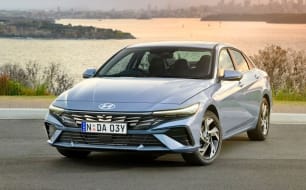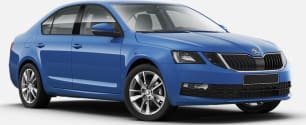Out about the hilly roads around Albury/Wodonga, the i30 Sedan N feels in its absolute element. The mixture of long open straights and tight corners really show off Hyundai’s incredible chassis tuning capabilities.
i30 Sedan N improvements for 2024 include brakes with better cooling and resistance to fade, stronger engine mounts for improved agility, more insulation, reduced vibrations, upgraded steering components for even more-precise handling and tweaks to the stability control system for more-effective operation.
Suspension is by McPherson-style struts up front and a multi-link rear-end arrangement.
Aided by an active variable exhaust note (which is quite nicely applied), the 2.0-litre four-pot twin-scroll turbo has a deep set of lungs, providing a decent wad of torque as it revs out fast and freely to its 6000rpm red-line. As you might expect, this is deceptively rapid.
Whether driving the solid and well-oiled six-speed manual – surely one of the best in the business and truly a great thing – or super-slick eight-speed DCT, there’s a delightful amount of muscle and speed for the money.
We’re also fans of the steering’s poise and response, resulting in hunkered-down handling that belies this car’s substantial length and width, backed up by lots of feel and feedback.
Throw in delightfully strong and effective braking, and the i30 N is incredibly alert and agile for something so big.
The trade-off of all this athleticism is a consistently firm – though not harsh – ride, as well as some road and tyre-noise intrusion when cruising comfortably along the highway.
As an everyday commuting proposition, the i30 Sedan N is right on the money.
Out on the racetrack, however, it's like on something a little bit more illicit, for things really start coming alive, with the N’s polished chassis set up revealing a satisfyingly vivid bandwidth of capability.
In 'Normal' mode, the front end feels reassuringly planted with minimal understeer, while the rear possesses a playful lightness that allows for progressive back-end lift-off if desired.
The i30 is so exquisitely tuned and pliable it makes amateurs feel like professionals.
Select 'N' mode and the electronic limiters loosen, for proper oversteer fun if that’s your thing, controlled and reeled right back in by meaty, confidence-boosting steering, providing improbably fluent handling for a sedan this size.
Slicing through tight bends and long arcs alike, the Hyundai’s sheer dynamic precision, consistency and discipline are deeply impressive. And intoxicating. We didn’t want to stop.
It may not look like a hot hatch in the prime of its life, but the i30 Sedan N sure behaves like one. And all for just $52K. Cheers, Hyundai!

